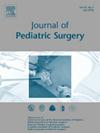Management of External Ventricular Drains for Neuromonitoring and Traumatic Brain Injury Treatment in Pediatric Patients Outside of Intensive Care Units: A Single-Institution Retrospective Study
IF 2.4
2区 医学
Q1 PEDIATRICS
引用次数: 0
Abstract
Background
Most pediatric hospitals manage patients who require external ventricular drains (EVDs) exclusively within pediatric intensive care units (PICUs) because of institutional protocols. Our institution commonly manages patients with EVDs on the neurotrauma floor (NTF). We evaluated whether this practice results in more EVD-associated complications.
Methods
A retrospective cohort study at our Level 1 pediatric trauma center identified all trauma patients ≤18 years old who received an EVD in 2018–2023. Demographics, presenting characteristics, in-hospital management, and EVD management details were recorded. The primary outcome was EVD-related complication events.
Results
Of the 81 patients who had EVDs placed after neurotrauma, 45 had their EVD managed exclusively in the PICU (PICU-EVD) and 36 had their EVD for some time while on the NTF (NTF-EVD). The groups were similar in sex (p = 0.87) and age (p = 0.054). PICU-EVD patients underwent fewer neurosurgeries (55.6% vs. 77.8%, p = 0.04) but spent more time on ventilators (10.6 ± 8.7 days vs. 6.4 ± 4.8, p = 0.02) and in the PICU (11.8 ± 9.0 days vs. 8.4 ± 5.9, p = 0.02). Total hospital stay was similar between groups (p = 0.44). NTF-EVD patients were on the drain longer (9.0 ± 7.4 days vs. 13.1 ± 9.1, p = 0.03), including 5.9 days on the NTF. Four EVD-related complications occurred overall: 2 accidental dislodgements and 2 cerebrospinal fluid leaks. EVD complication rates were similar on the NTF and PICU (2.2% vs. 8.3%, p = 0.21). All complications occurred late in the hospital course and were minor. A Poisson regression model comparing complication rates between PICU-only and NTF management (433 vs. 441 catheter days, respectively) found a complication rate of 6.8 per 1000 catheter days in the NTF group versus 2.3 per 1000 catheter days in the PICU-only group, yielding a rate ratio of 2.95 (95% confidence interval 0.29–30.4, p = 0.35). However, this difference was not statistically significant.
Conclusion
Our center routinely discharges patients from the PICU to the NTF with EVDs in place. This practice may be associated with no increased risk or rate of EVD-related complications compared to PICU-only management.
Level of Evidence
IV.
在重症监护室外对用于神经监测和创伤性脑损伤治疗的儿科患者进行脑室外引流的管理:单机构回顾性研究。
背景:大多数儿科医院根据机构规定,只在儿科重症监护病房(PICU)内管理需要进行脑室外引流(EVD)的患者。我们的医院通常在神经创伤楼层(NTF)管理 EVD 患者。我们评估了这种做法是否会导致更多与 EVD 相关的并发症:我们一级儿科创伤中心的一项回顾性队列研究确定了 2018-2023 年接受 EVD 的所有年龄小于 18 岁的创伤患者。研究记录了人口统计学、发病特征、院内管理和 EVD 管理细节。主要结果为EVD相关并发症事件:在81名神经创伤后置入EVD的患者中,45名患者的EVD完全在PICU(PICU-EVD)进行管理,36名患者的EVD在NTF(NTF-EVD)进行了一段时间的管理。两组患者的性别(p = 0.87)和年龄(p = 0.054)相似。PICU-EVD 患者接受的神经外科手术较少(55.6% vs. 77.8%,p = 0.04),但使用呼吸机的时间(10.6 ± 8.7 天 vs. 6.4 ± 4.8 天,p = 0.02)和在 PICU 的时间(11.8 ± 9.0 天 vs. 8.4 ± 5.9 天,p = 0.02)较长。两组患者的总住院时间相似(p = 0.44)。NTF-EVD患者的引流时间更长(9.0 ± 7.4天 vs. 13.1 ± 9.1天,p = 0.03),其中NTF患者的引流时间为5.9天。总计发生了4例EVD相关并发症:2例意外脱落,2例脑脊液漏。NTF和PICU的EVD并发症发生率相似(2.2% vs. 8.3%,p = 0.21)。所有并发症均发生在住院后期,且均为轻微并发症。泊松回归模型比较了仅在 PICU 和 NTF 管理下的并发症发生率(分别为 433 对 441 个导管日),发现 NTF 组每 1000 个导管日的并发症发生率为 6.8,而仅在 PICU 组每 1000 个导管日的并发症发生率为 2.3,比率比为 2.95(95% 置信区间为 0.29-30.4,p = 0.35)。然而,这一差异并无统计学意义:我们中心的常规做法是将患者从 PICU 转至 NTF,同时安装 EVDs。与仅在 PICU 进行管理相比,这种做法可能不会增加 EVD 相关并发症的风险或发生率:证据级别:IV。
本文章由计算机程序翻译,如有差异,请以英文原文为准。
求助全文
约1分钟内获得全文
求助全文
来源期刊
CiteScore
1.10
自引率
12.50%
发文量
569
审稿时长
38 days
期刊介绍:
The journal presents original contributions as well as a complete international abstracts section and other special departments to provide the most current source of information and references in pediatric surgery. The journal is based on the need to improve the surgical care of infants and children, not only through advances in physiology, pathology and surgical techniques, but also by attention to the unique emotional and physical needs of the young patient.

 求助内容:
求助内容: 应助结果提醒方式:
应助结果提醒方式:


